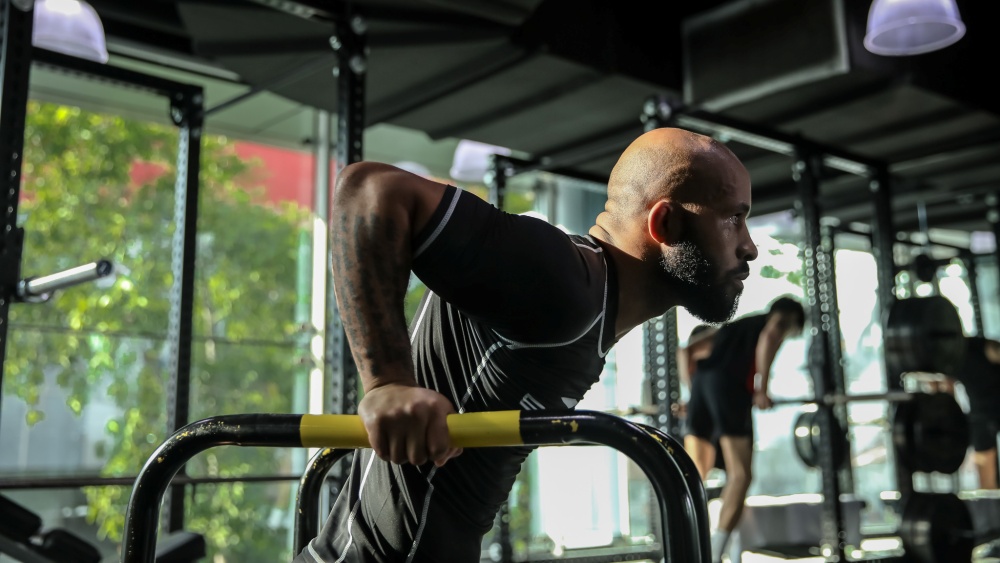Your waking hours involve making movements that engage different joints and muscle groups at the same time. Take a day when you need to catch a flight for a short trip. First, you’ll put your luggage in the car, which requires bending and lifting. Next, you’ll get in the car, which requires a shallow squat as you lower yourself into the driver’s seat. Now you stretch and twist your torso as you reach for something in the back seat.
You repeat many of these movements at the airport as you check your luggage. Finally, you put your carry-on bag in the plane’s overhead bin before taking your seat. This final task requires you to lift a (possibly bulky) load over your head while keeping your balance.
These are the kinds of full-body movements that you mimic when doing workouts that feature functional exercises.
The Concept Behind Functional Fitness
A person’s quality of life includes the ability to perform everyday tasks with relative ease and without pain. Injury, age, illness, or a lack of fitness can interfere with this ability. This is where exercises that enhance the body’s functional fitness come in.
Functional exercises are compound or full-body movements that mimic the kinds of movements we make in real-world scenarios. Most functional exercises involve moves like bending, squatting, lifting, pushing, pulling, hauling, twisting, and turning. These exercises target the muscle groups around the following joints and bones:
- Hip joints
- The spine
- Joints and bones around the chest and shoulders
- Knees and ankles
- Elbows and wrists
Most functional workout routines focus on strength training exercises that build and condition muscle. The exercises typically involve the use of your body weight, free weights, or resistance bands. Stationary workout machines are less suitable for functional fitness workouts, for a few reasons. The biggest of these reasons is that exercise machines do not mimic the mobility of everyday body movements.
Highlights And Benefits Of Functional Fitness Routines
An effective functional fitness program should engage both body and mind to keep you interested in the long term. Functional exercises also train the mind and body to work together to ensure efficient, coordinated motion. The functional fitness program should also yield results that you can see and feel as you go about your day. Here’s what these results look like:
- An increase in conditioning and body strength makes it easier for you to do physical tasks that you found difficult before.
- More flexibility, speed, and coordination in your movements.
- Functional exercises reduce the chances of injury as you do easy or challenging physical tasks.
- Strength-building exercises keep the joints and muscles strong, even as aging happens.
- Functional exercises can restore mobility and muscle strength after illness, injury, or a drastic loss of fitness.
- The exercises also sculpt the body by building muscle, burning fat, and burning calories.
You’ll find that your body movements become more efficient as you go about your day. Instead of raw force, your mind and body will use clever mechanics to perform easy and difficult tasks alike. Here are some of the exercises that help you to reap these benefits:
The Squat
We perform some variation of the squat as we sit, tie a loose shoelace, or scratch the ears of your pet dog. These movements get a lot easier when we include squats in our workouts.
You can use free weights or your body weight to perform a set of squats. You can also make each rep as deep or as shallow as you like, depending on your fitness level. As your back and lower body become stronger, increase the weight that you use for your squats. With time you should be able to lift and move a fairly heavy object without hurting the lower back.
Squats train the body to lift fairly heavy objects by engaging the core, glutes, and leg muscles. Leaning on these three muscle groups protects the lower back from injuries to the bone and soft tissue.
The Deadlift
Adding this exercise to your workouts makes it easier for you to move furniture, or pick up a bag of cement. Doing the deadlift in proper form will work pretty much every muscle group in your body. This means that your lower back remains protected from doing all of the heavy lifting. Instead, the legs, core, chest, and entire back work as a single unit to raise the weight off the ground.
Overhead Press
The overhead press helps with tasks that require you to lift bulky or heavy items above your head. This type of movement requires you to keep your balance as you place or retrieve an item from a high place. In this scenario, balance means that you should lift the object overhead without dropping it or falling over yourself.
An overhead press works the muscles of the core, chest, shoulders, and arms. These muscles kick into gear as your upper body works to stabilize itself while you stand and lift. Do this exercise with a barbell that you load with weights that you can lift comfortably. You can also use dumbbells if you need to start with something more lightweight.
The Farmer’s Walk
This is a simple exercise that involves walking while carrying a free weight on each hand. The idea is to maintain good posture as the weights in your hands target different muscle groups in different ways. Your back and shoulders will take on much of the weight, along with your arms and core.
As you walk, keep your shoulders back, engage your core, and take small steps. The size of your steps should be similar to your strides when you’re carrying bags of shopping in each hand.
The Kettlebell Swing
Your mobility largely depends on your hip joints, which pretty much connect the upper and lower body. The hip joints need to be stable and flexible enough for walking, stretching, climbing, and lifting things with some weight in them. Towards this end, you can use the kettlebell swing to strengthen and condition the hip joints.
The kettlebell swing is a full-body exercise that recruits all joints and muscle groups to lift and swing an uneven weight. Working with uneven weights trains your body to keep its balance and stability as you move while carrying awkward items.
The Step Up
This exercise mimics an activity that most of us do several times a day, which is to walk up or down some steps. You only need a steady, solid platform that can support a decent amount of weight.
To do the step up simply step onto the platform with one leg, followed by the other. Now step back down to complete the rep. After you do a few reps, alternate the leg that lifts your body onto the platform.
The step-up works the leg muscles, the knees, and the hip joints. This exercise also trains your body to maintain stability and balance as you make rapid movements on uneven ground.
Box Jump
Take the step up a notch higher by jumping onto your exercise platform with both legs. This intense, full-body exercise recruits multiple muscle groups to make an explosive body movement.
You’ll have to engage your core, chest, and back to maintain the body’s balance as you jump on and off the platform. At the same time, your leg muscles will provide the propulsive force that will launch you onto the step/platform.
In addition to delivering an intense cardio workout, the exercise also conditions the knees, hip joints, and lower back.
Use Functional Exercises To Make The Most Of Each Day
Functional fitness programs are suitable for almost everyone, and they are customizable. A good fitness instructor will craft workouts that match your current health needs, fitness level, and age.
The resulting workouts can be intense routines that feature nothing but functional strength exercises. Alternatively, you can add select functional exercises to an existing fitness routine. These are just a few of the different ways that functional strength exercises can work for you.
You may also like:
Strength Training Myths Debunked: Separating Fact From Fiction In The Gym

















